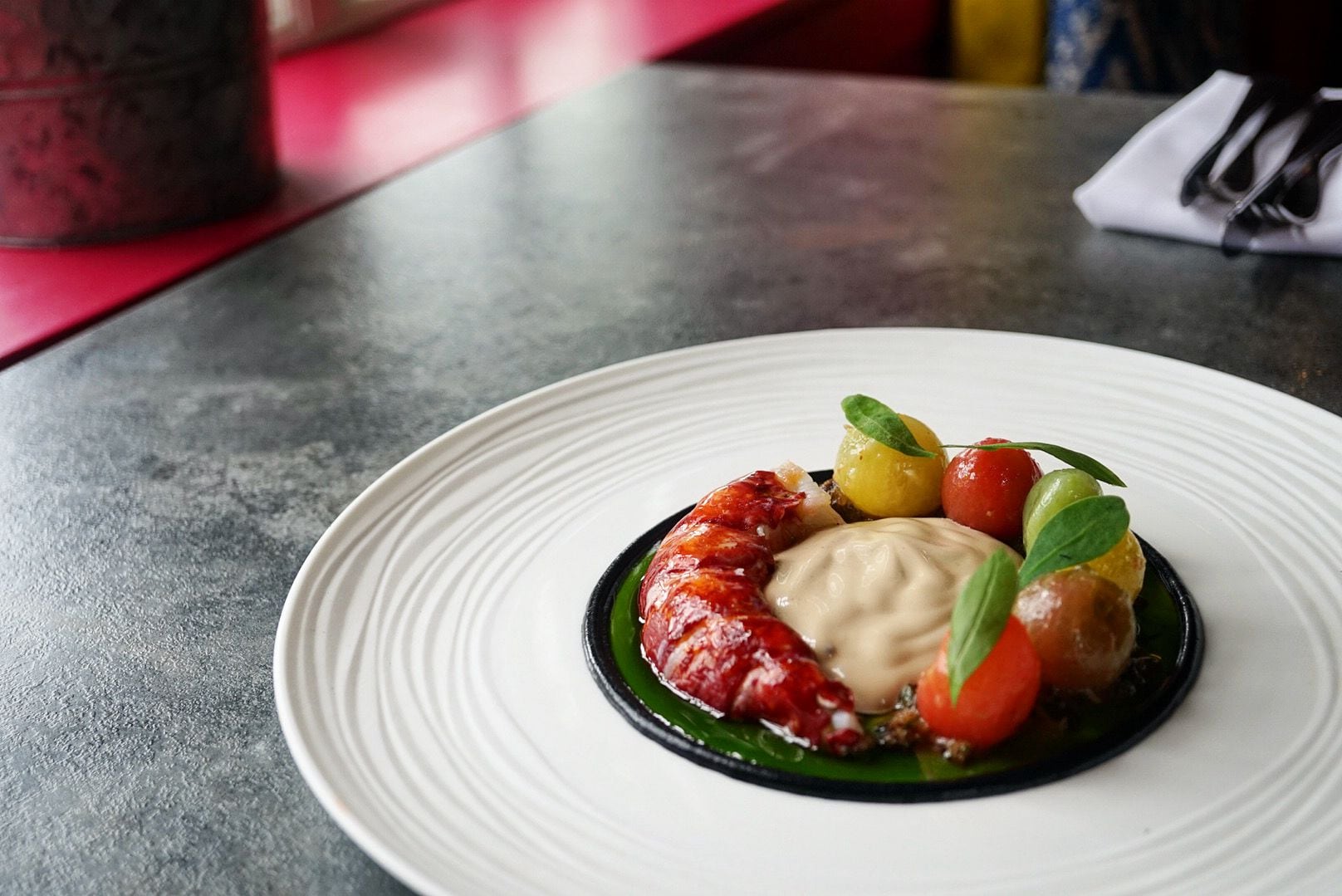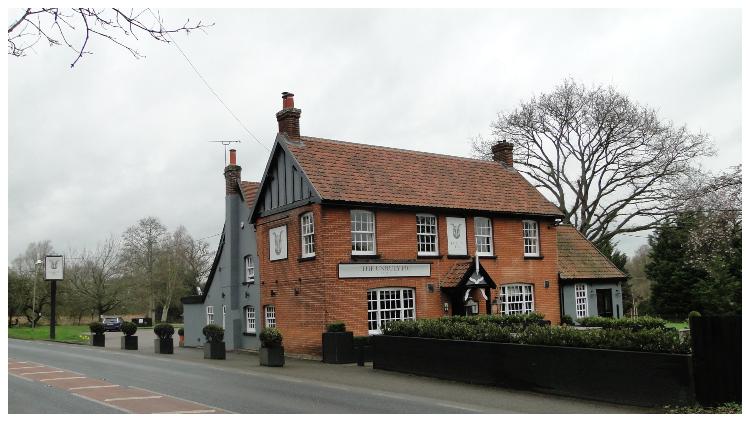The Unruly Pig took number one slot of the Estrella Damm Top 50 Gastropubs list this year for the third time, after also being crowned first place in 2024 and 2022.
Dating back to the 16th century, the East Anglian-based pub has been run by Brendan Padfield and chef-patron Dave Wall since 2015.
Head chef Wall shares how to create the venue’s roasted native lobster tail with a warm salad of tomatoes, black olive puree and emulsion, and burnt lemon.
The dish uses fresh lobster from the Suffolk coast and is priced at £25 for half a tail and £45 for a whole tail.
Wall told The Morning Advertiser (The MA): "We love lobster at The Unruly Pig. We are only 10 miles from the Suffolk coast where there are an abundance of native lobsters available from day boat fisherman. Our British native lobsters in my humble opinion are as good as lobsters get – beautiful sweet and tender flesh far superior to the Canadian variety that is often also sold at fish markets."
“Alongside the amazing lobster, this dish really elevates tomatoes – again we like to showcase fantastic British produce, and we only use tomatoes either grown by one of our favourite locals Lin (who brings us lots of incredible organically grown goodies from her allotment) or the beautiful Isle of Wight tomatoes."
“The umami hit imparted by the black olive and parmesan is countered by the sweet acidity from the burnt lemon creating a real melody of punchy flavours.”
Roasted native lobster tail with Isle of Wight tomatoes, black olive & burnt lemon
Ingredients (serves 1-2):
Lobster:
- 1 small lobster tail per portion, or one large tail between two, raw
- 8% Brine: 1L water:80g fine sea salt
Method:
- Separate the lobster tail from the body and remove the entrail pipe by twisting the centre fin and gently prising out
- Reserve the bodies for stock and the claws for another dish
- Deep freeze until at least -20 degrees
- Defrost, and when the lobster is semi-defrosted carefully peel the shell from the flesh
- Form the brine by bringing 500ml of water to a simmer and dissolving all of the salt. Do not allow the water to simmer as it might reduce, inadvertently increasing the concentration of your brine
- Add the remaining 500ml of water (cold) and allow the brine to chill. You could add 500g of ice instead of the water if you wanted to accelerate this step
- Add the raw peeled tail to the brine and refrigerate. The amount of time required to brine the tail can vary dependant on size and individual variations of lobster, but 1 tail from a 600g fish takes approximately 30 minutes. Remove it from the brine when the flesh begins to firm up
- Carefully slide a slightly curved kebab skewer through the tail, ensuring the skewer travels directly through the centre of the length of the tail
- Set aside until cooking for service
Black olive puree (base for the emulsion):
- 50ml water
- 200g black olive
Method:
- Blend ingredients in a liquidiser such as a Vitaprep blender to a fine, smooth puree
- Divide into four batches and reserve until required
(Note: it is best to make in bulk because most blenders will not puree a smaller amount as smoothly as is required)
Black olive emulsion:
- 100g egg yolk
- 60g black olive puree (as above)
- 5g fine sea salt
- 30g white balsamic vinegar
- 125g Olivia blend oil (pomace oil)
- 125g early harvest olive oil
Method:
- Sabayon the egg yolk, black olive puree, salt and white balsamic vinegar in a Thermomix or similar heating blender for 6-7 minutes at a low speed at 80°C until you have a thick, stable and glossy base
- Mix the two oils and slowly emulsify into the base
- Adjust with a splash of water if necessary – the consistency should be of a thick soup or puree as opposed to a firmly-set hollandaise
- Charge in an espuma gun
Tomatoes:
- Blanche and refresh the tomatoes and peel
- Reserve at room temperature for service
Black olive dressing:
- 100g olive oil
- 40g black olives
- 10g anchovies
- 20g mini capers
- 20g shallots fine dice
- 30g parmesan (microplaned)
- 10g finely chopped parsley
Method:
- Finely dice the olives, anchovies and shallots
- Mix all ingredients
Burnt lemon:
- 4 lemons
- 90g caster
- 50g muscovado sugar
- 225g water boil all together
- 20g fresh lemon juice
- 7g salt
- Teaspoon black powder
- 20g aged balsamic vinegar
Method:
- Blacken the lemons all over directly on a plancha, bbq or dry frying pan. This should take approx. 15-20 minutes and by the end the lemon should be cooked through but still have life in the centre
- Bring the sugars and water up to a boil and then blend all ingredients together in a liquidiser of blender such as a Vitaprep until completely smooth
- Pass through a chinois
- Decant to a squeezy bottle
Dill oil:
- 500g pomace oil
- 100g parsley
- 200g dill
- 6g maldon salt
Method:
- Blend all ingredients in Thermomix or similar heated blender at 80°C for 4 minutes on speed 6, then 30 seconds at maximum speed
- Chill instantly over an ice bath, then allow ingredients to infuse for 6-10 hours
- Tip the mixture into a muslin-lined colander with a bowl underneath, and hang overnight in the fridge
- The following day the oil should have passed into the bowl and be a bright green, vibrant and flavourful oil (the remaining ‘pulp’ makes a great pesto base for staff food!)
To finish:
- Sea purslane
- Basil
- Dill
- Maldon salt, olive oil, white balsamic vinegar
To serve:
- Preheat a frying pan over a medium-high heat
- Add a knob of butter and allow to foam and very gently begin to gently brown
- Add the skewered lobster tail along with a garlic clove and a sprig of thyme and very gently pan roast for around 3-4 minutes , turning frequently and basting the butter over the tail. Do not sear too hard
- When the tail is firm and hot through, allow to rest for 5 minutes before serving
- Whilst the lobster is resting, plate the remainder of the dish
- Dress the tomatoes and herbs with Maldon sea salt, olive oil and white balsamic vinegar
- Pipe a clean circle of burnt lemon puree on the plate
- Generously spoon the black olive dressing in a half crescent inside the burnt lemon ring
- Lay the tomatoes upon the dressing and top with the dressed herbs
- Remove the skewer and carve the lobster (if using a half) and roll around in the resting juices and butter. Lay upon the clean half of the circle opposite the tomatoes
- Use the espuma gun to charge a generous portion of the black olive hollandaise in the centre of the plate between the lobster and the tomatoes
- Finish with dill oil




